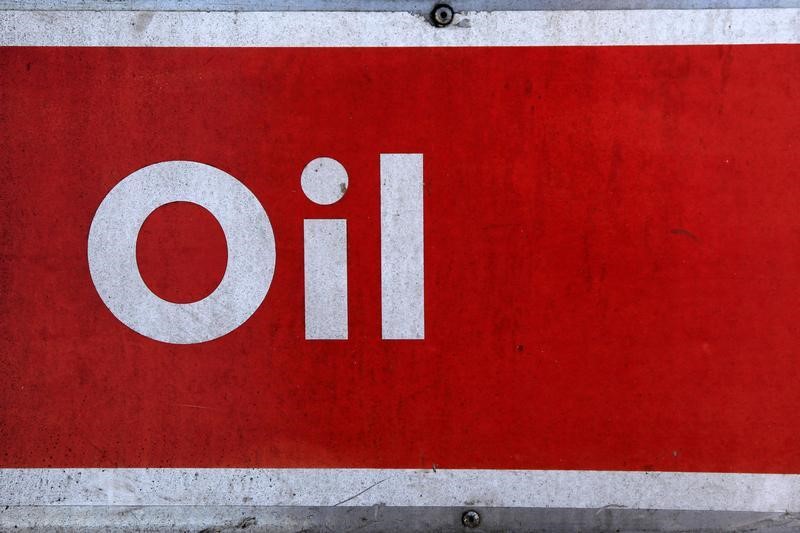(Repeats to additional subscribers, with no change to text)
By Swetha Gopinath
Dec 3 (Reuters) - U.S. crude prices were hovering just above
$40 in early Asian trading on Thursday, after dropping more than
4 percent a day earlier, on an unexpected rise in U.S.
stockpiles that is compounding a global supply glut.
U.S. crude CLc1 was trading at $40.23 per barrel at 0005
GMT on Thursday, up 29 cents from its last settlement, but down
nearly 14 percent since the start of November.
Crude inventories USOILC=ECI rose for the tenth straight
week, climbing 1.2 million barrels in the week to Nov. 27 in
contrast to analysts' expectations of a decrease of 471,000
barrels, data from the U.S. Energy Information Administration
showed on Wednesday.
"The market was expecting a modest rundown in U.S. crude oil
inventories last week, but API and EIA have reported rises of
1.64 and 1.18 million barrels, respectively, this week," ANZ
bank said on Thursday.
The inventory build will add to an oversupply that has
caused a 60 percent price fall since June 2014. Oil production
already exceeds demand by 0.5-2 million barrels per day.
Warmer-than-usual weather in the northeast United States, a
major market for heating oil, and a shale oil boom in the
country are contributing to the rise in stockpiles.
Moreover, the Organization of the Petroleum Exporting
Countries (OPEC) is widely expected to keep its high output
unchanged at a meeting in Vienna this Friday.
"Reports were the majority of OPEC members support a
production cut, except for the dominant supplier Saudi Arabia,"
ANZ said.
Oil prices briefly turned positive on Wednesday after
Tehran's oil ministry news agency Shana said that a majority of
OPEC members agree on output cuts, but the report also pointed
out that OPEC's top producer Saudi Arabia was not supportive of
the reduction.
A strong U.S. dollar, which hit its highest against the euro
in more than seven months on Wednesday, also weighed on oil
prices.
A strong dollar is a negative for oil markets as it makes
greenback-dominated contracts such as crude futures more
expensive for holders of other currencies.
- English (USA)
- English (UK)
- English (India)
- English (Australia)
- English (South Africa)
- English (Philippines)
- English (Nigeria)
- Deutsch
- Español (España)
- Español (México)
- Français
- Italiano
- Nederlands
- Português (Portugal)
- Polski
- Português (Brasil)
- Русский
- Türkçe
- العربية
- Ελληνικά
- Svenska
- Suomi
- עברית
- 日本語
- 한국어
- 简体中文
- 繁體中文
- Bahasa Indonesia
- Bahasa Melayu
- ไทย
- Tiếng Việt
- हिंदी
RPT-U.S. crude oil prices hover just above $40 on stockpile rise
Published 2015-12-02, 09:01 p/m
RPT-U.S. crude oil prices hover just above $40 on stockpile rise

Latest comments
Install Our App
Risk Disclosure: Trading in financial instruments and/or cryptocurrencies involves high risks including the risk of losing some, or all, of your investment amount, and may not be suitable for all investors. Prices of cryptocurrencies are extremely volatile and may be affected by external factors such as financial, regulatory or political events. Trading on margin increases the financial risks.
Before deciding to trade in financial instrument or cryptocurrencies you should be fully informed of the risks and costs associated with trading the financial markets, carefully consider your investment objectives, level of experience, and risk appetite, and seek professional advice where needed.
Fusion Media would like to remind you that the data contained in this website is not necessarily real-time nor accurate. The data and prices on the website are not necessarily provided by any market or exchange, but may be provided by market makers, and so prices may not be accurate and may differ from the actual price at any given market, meaning prices are indicative and not appropriate for trading purposes. Fusion Media and any provider of the data contained in this website will not accept liability for any loss or damage as a result of your trading, or your reliance on the information contained within this website.
It is prohibited to use, store, reproduce, display, modify, transmit or distribute the data contained in this website without the explicit prior written permission of Fusion Media and/or the data provider. All intellectual property rights are reserved by the providers and/or the exchange providing the data contained in this website.
Fusion Media may be compensated by the advertisers that appear on the website, based on your interaction with the advertisements or advertisers.
Before deciding to trade in financial instrument or cryptocurrencies you should be fully informed of the risks and costs associated with trading the financial markets, carefully consider your investment objectives, level of experience, and risk appetite, and seek professional advice where needed.
Fusion Media would like to remind you that the data contained in this website is not necessarily real-time nor accurate. The data and prices on the website are not necessarily provided by any market or exchange, but may be provided by market makers, and so prices may not be accurate and may differ from the actual price at any given market, meaning prices are indicative and not appropriate for trading purposes. Fusion Media and any provider of the data contained in this website will not accept liability for any loss or damage as a result of your trading, or your reliance on the information contained within this website.
It is prohibited to use, store, reproduce, display, modify, transmit or distribute the data contained in this website without the explicit prior written permission of Fusion Media and/or the data provider. All intellectual property rights are reserved by the providers and/or the exchange providing the data contained in this website.
Fusion Media may be compensated by the advertisers that appear on the website, based on your interaction with the advertisements or advertisers.
© 2007-2025 - Fusion Media Limited. All Rights Reserved.